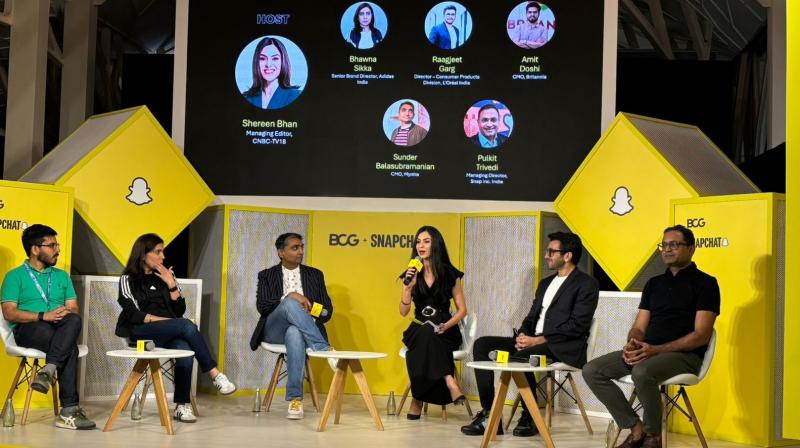How different and important is the Gen Z cohort from the other generations? What are the values critical to Gen Z? How can brands connect better with Gen Z? These were the key questions answered at Snapchat and BCG’s panel on ‘Redefining Modern Marketing: Adapting to the Gen Z code’.
Moderated by Shereen Bhan, managing editor, CNBC-TV 18, the panel included Bhawna Sikka, senior brand director, adidas India; Raagjeet Garg, director - consumer products division, L’Oreal India; Amit Doshi, chief marketing officer, Britannia; Sunder Balasubramanian, chief marketing officer, Myntra; and Pulkit Trivedi, managing director, Snap Inc India.
Balasubramanian talked about how important a cohort Gen Z is.
He said, “Over 25% of our user base is Gen Z. Our customer base last year was eight million Gen Z people and for this year it’s 16 million. Given the life stage they are in, their ability to spend on a transaction is lower. But, Gen Z purchases about 25% more often than millennials. For us, it's a super important cohort as we look into the future. We think the growth of fashion and beauty will be higher. We are a marketplace, we democratise access and that goes in sync with what Gen Z looks for.”
He added, “Gen Z are more trend-first and we can showcase trends to them. The funny part about trends is that even millennials look at trends but it is so different from Gen Z because they are micro trends. They are about what was this month. They keep us on our toes all the time but that’s where the business will be.”
Spotlighting how Gen Z defines trends today, Garg said, “We need to be Gen Z at heart and learn from them. They are looking for trends, and it's the trends that define what kind of products consumers will finally look for. So what we look at from Gen Z are trends that they are pretty much searching for and then base those trends on how we ensure we provide the right products and services to the consumers, especially this cohort.”
Sikka highlighted the core values that are critical to Gen Z.
She asserted, “I think this is an audience for whom authenticity is important. This is also an audience where we are seeing resilience and optimism and there is a value shift. The generation doesn’t want any pressure on them but they do want to perform. Optimism is there, but not the pressure. They want to do it their way. So we made a huge philosophical shift, which is seeing manifest in terms of all of our communication now.”
Doshi delved into the challenges and opportunities that come with this cohort. He talked about how brands that have existed for many years need to prepare to match the generation whose set of values has changed.
He noted, “We have got extremely iconic brands. For brands that go pretty much into every home in the country, the challenge is how to reinterpret the brand’s message to Gen Z. The second is that this consumer set is also seeking experiences, and these experiences are their bragging rights. It's not just about consuming, but it's also about sharing with the squad. And the third dimension is how you discover and work. It’s about how we work and build a unique omnichannel experience. What’s most important is that the core of the brand should stay the same.”
On the note of brand loyalty, Balasubramanian said, "As long as you are providing the Gen Z the freshness, they are loyal to you. I heard from someone 'if you are loyal to Gen Z, they are loyal to you'."
Talking about how things have changed for the brands over the last few years, Garg added, "A couple of years back, when it came to media choices, we we pretty much relying on traditional media to make the trend happen. And by the time it reaches the consumer, maybe you miss the bus. What has changed over the last, maybe five years for us, is that you spot the trend in ten minutes and ensure that trend is relevant to us. Gen Z is also teaching that you need something new and exciting."
Building on what Garg said, Trivedi pointed how the consumption pattern of the Gen Z is different from the others.
He said, "One of the things that we realised is that there is context to how this generation consumes. If you back to Gen X, it's more about consumption around status, you go to millennials, it's more experience. I think the consumption pattern here with this audience is more about access and not possession. One of the critical currencies of this generation is the lack of attention. One of the things that brands should think about is that it's not about reach and frequency but about how you engage them."













